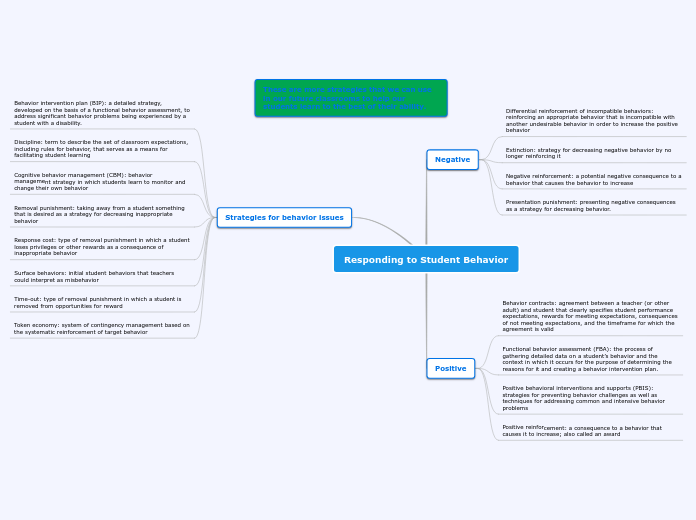realizată de Kylee Batey 6 ani în urmă
267
lesson 13
Addressing student behavior in educational settings involves a variety of strategies that can be broadly categorized into negative and positive approaches. Negative strategies include the use of punishment to present negative consequences and reduce undesirable behavior, and extinction, which involves no longer reinforcing negative behavior.









